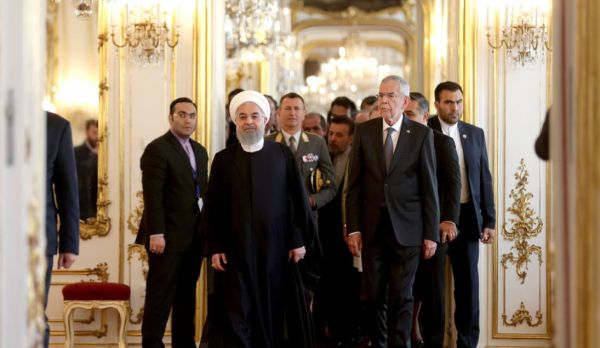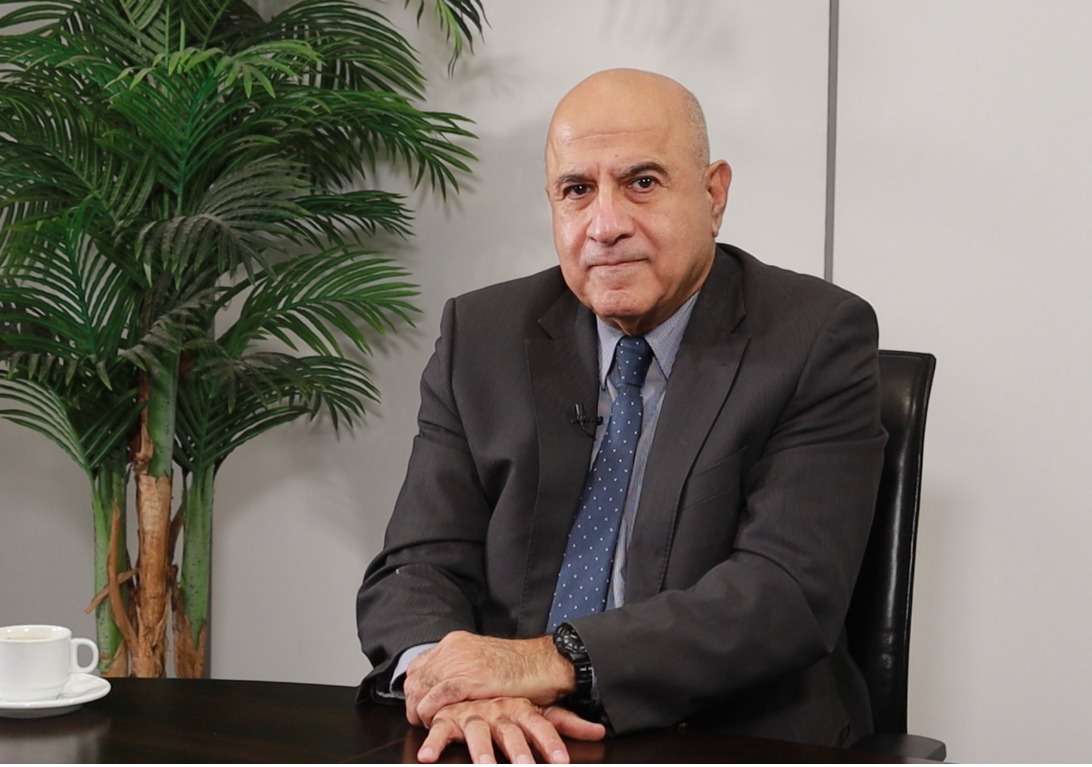Analysis/Instead of Crafting a Strategy on Iran, Trump Plays With the Lion’s Tail
زيفي باريل من الهآررتس: بدلا من صياغة استراتيجية خاصبة إيران، يلعب ترامب مع ذيل الأسد
Zvi Bar’el/Haaretz/July 28/18
In his battle of wits with Rohani, Trump blinked first. Like Israel, Washington mistakenly believes that tactical strikes on Iranian targets and threats on Twitter can get Iran out of Syria
Donald Trump and Hassan Rohani behaved this week like two youths from rival gangs. “Don’t play with the lion’s tail,” the Iranian president warned his American counterpart. Iranian Foreign Minister Javad Zarif wrote on Twitter: “We’ve been around for millennia & seen fall of empires, incl our own, which lasted more than the life of some countries.” Zarif added: “BE CAUTIOUS!” — repeating advice given by Trump a few hours earlier.
All that’s missing is an argument about who started it, not to mention a “hold me back” (a popular phrase in Israel), to understand that the mutual threats are a new diplomatic language. Summing up the week, it seems Trump was the one to blink when he made clear he was willing to discuss a “real deal” with Iran, “not the deal that was done by the previous administration, which was a disaster.”
This followed the revelation that Rohani had rejected eight requests from Trump for a meeting. Earlier Rohani had said that Iran had the means to fight sanctions; it could, for example, close the Strait of Hormuz.
It’s doubtful whether Rohani really means it or whether he’s just quoting Supreme Leader Ali Khamenei in order to ease the tremendous pressure the conservatives are putting on him. Lots of the back-and-forth is coming on Twitter, but however you interpret the tweets, tweets aren’t negotiations and don’t start wars, at least not yet.
What’s clearer is that Washington has no practical policy on Iran or any strategy for achieving its goals. The dream of destroying the Iranian regime and turning it into a democratic country — as U.S. Secretary of State Mike Pompeo likes to market as the ultimate goal — doesn’t go into detail.
Who’s supposed to remove the regime in Tehran, Iran’s citizens or the United States? Who will replace the regime, the Iranians in U.S. exile, the Mujahedeen-e-Khalq group that receives pats on the back from senior members of the neoconservative administration? Or maybe the Iranian liberals who are about to suffer from new American sanctions?
The enthusiasm that has gripped Washington over the protests and strikes that have erupted in Iranian cities ignores that the protester numbers this year have been dramatically lower than in the giant protests of 2009, which also didn’t manage to stir a counterrevolution.
It remains to be seen if the economic sanctions being imposed on Iran next week will force the regime to its knees. Many European companies have left Iran or frozen their operations, but this week Zarif said that there had been progress in talks with the European Union, allowing for a channel to let Iranian banks operate via the European Investment Bank.
The economic angle
This announcement still has no practical application because the president of the European Investment Bank, Werner Hoyer, has said the bank can’t be directly involved in operations in Iran or bypass sanctions; after all, if it boycotted by the United States, it would have a hard time raising the capital for projects it’s responsible for in other countries. Russia said last week it intends to invest $50 billion in Iranian infrastructure, and has already signed a $4 billion deal. Buy it’s unclear if this is a new agreement or the renewal of a deal signed in 2015 before sanctions were lifted.
Washington agreed to exempt from sanctions several European companies, but if Trump thought the sanctions would hermetically seal the Iranian economy, he has a surprise coming. After all, like Russia, China doesn’t intend to stick to a U.S. sanctions policy and will also increase imports from Iran.
And a few days ago Turkey’s foreign minister said his country wouldn’t implement any sanctions because, as he put it, Turkey buys oil from Iran on good terms, and what other options are there? So what will Trump do if such big gaps hurt his sanctions policy?
On other Middle East fronts too, the United States acts as if this part of the world had no bearing on it. The “deal of the century” is being dwarfed by the deal with Hamas. Freezing aid to the Palestinian Authority is the only item on display in Trump’s empty shop.
The absurdity is that while the United States is operating to undermine the PA, it’s pressing to help the Hamas government in Gaza. Here it finds a loyal partner in Jerusalem and its raft of contradictions. Israel opens the Kerem Shalom crossing while doing battle in Gaza. It subtracts tax revenue to the PA for any money paid to Palestinian prisoners and families of terrorists, but encourages the Gulf countries to contribute to rehabilitating Gaza. These contradictions seem essential to preventing a military operation in Gaza, but there’s no policy in it.
Meanwhile, the Washington that aspires to shrink Iran’s influence in the Middle East doesn’t contribute anything toward ending the war in Yemen, where the United Arab Emirates and the Saudis are fighting the Houthis backed by Iran. From a local war that erupted after the Arab Spring, Yemen has turned into an Arab-Iranian arena where the only country ready to provide mediation is Iran.
The Saudi and UAE failures, even after their capture of the port city of Hodeida, have led to the deaths of more than 10,000 people, half of them civilians, including many children — and including from disease, thirst and hunger. Washington doesn’t consider the numbers of victims in its policy, but what about the strategic interest of preserving a Yemen that sits at a vital naval crossroads outside Iran’s sphere of influence?
Yemen and Syria aren’t the only conflict zones beyond the realm of U.S. involvement. Take Iraq. It enjoys American aid; Washington is also trying to raise $3 billion from donor nations for Iraq, a country that has overcome Islamic State domination thanks to the United States. But it isn’t necessarily pro-American.
The Iraqi government pays the salaries of militias trained and armed by Iran, Iran is Iraq’s third most important trading partner after Turkey and China, and some of the Shi’ite parties that won the latest election support coordination and partnership with Iran. Even half the Kurdish region enjoys close trade ties with Iran and takes care to maintain good relations with a country where eight to 10 million Kurds live, half of them in four Kurdish districts in the country’s northwest.
In recent weeks there have been protests in the southern Iraqi city of Basra, and there have been calls to get Iran out of Iraq, while the Iraqi government blames Iran for damaging its water sources. But the Iraqi regime can’t give up Iranian economic involvement or cut itself off politically from Tehran.
Iraqi and Syrian differences
In May, Pompeo said pro-Iranian militias and terrorists have been sent to Iraq by Iran to undermine the Iraqi security forces and erode Iraqi sovereignty. And what does the administration do? Tweet and make speeches.
The assumption is that the moment Iranian or pro-Iranian forces establish themselves in another country, there will be no way to get them out. Because of this there are fears that pro-Iranian forces in Syria will mix with the Syrian army and become a permanent military arm.
The same assumption may be put forward regarding Iraq, but the differences between the governments in Syria and Iraq make it difficult to believe this. The pro-Iranian Shi’ite militias are based on Iraqi civilians, just as Hezbollah in Lebanon is built on Lebanese citizens and not foreigners.
The Shi’ite leadership in Iraq, as opposed to the leadership in Syria, has a strong religious leaning toward Iran. The Syrian Alawites are considered a deviant Shi’ite stream. Syrian economic dependency on Iran was almost negligible before the war, as opposed to the Syrian debt to Iran after the war estimated at $35 billion.
Also, it’s doubtful whether the Syrian army could or would want to absorb pro-Iranian foreign units, especially since these forces will always be seen as disloyal to the regime. It is also doubtful whether once the war is over, Syria would permit Iran to establish separate military bases that would provide convenient targets for Israeli attacks such as what’s taking place now.
With the Syrian regime’s resumption of control over wide swaths of Syria and life returning to normal in many districts, and mainly amid the general agreement that there is no alternative at the moment to the Assad regime, an active American policy would be needed to restore Syria to the Arab circle. Such a policy would require coordination with Saudi Arabia, the UAE, Egypt, Russia and countries seeking to help rebuild Syria.
But the U.S. administration, like Israel, is still captive to the concept that tactical strikes against Iranian targets and threats on Twitter will be enough to get Iran to withdraw from Syria. This is a classic tactic of playing with the lion’s tail, creating the illusion that some strategy will turn up at the tail’s edge.






















